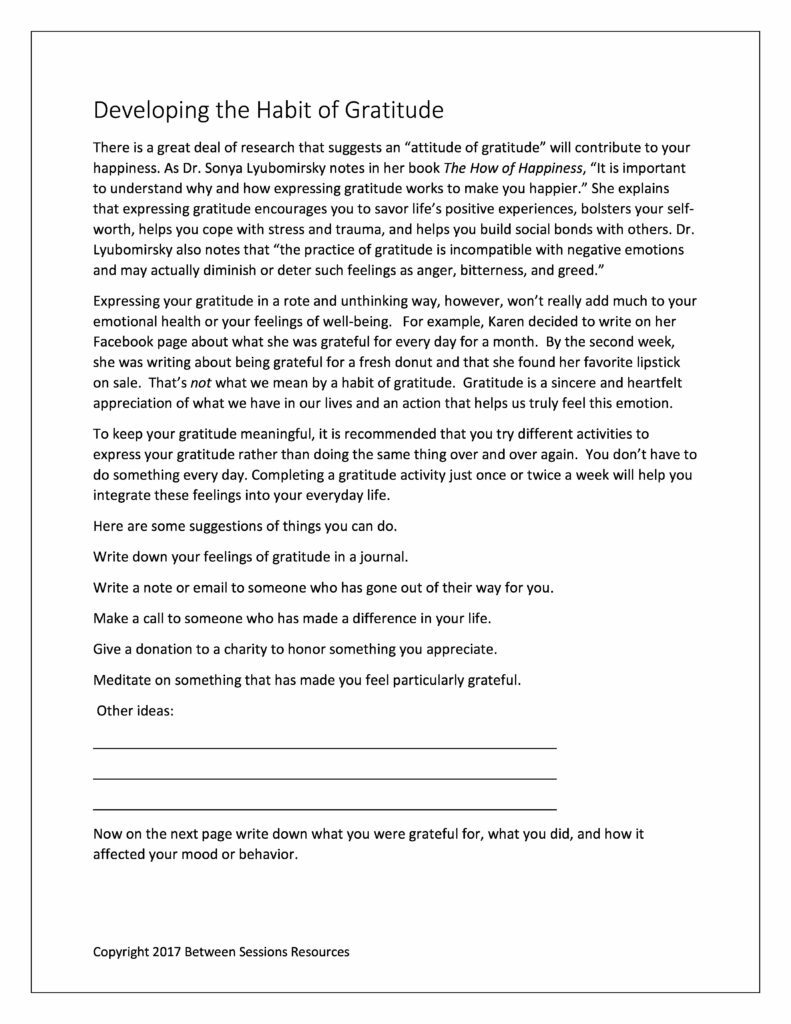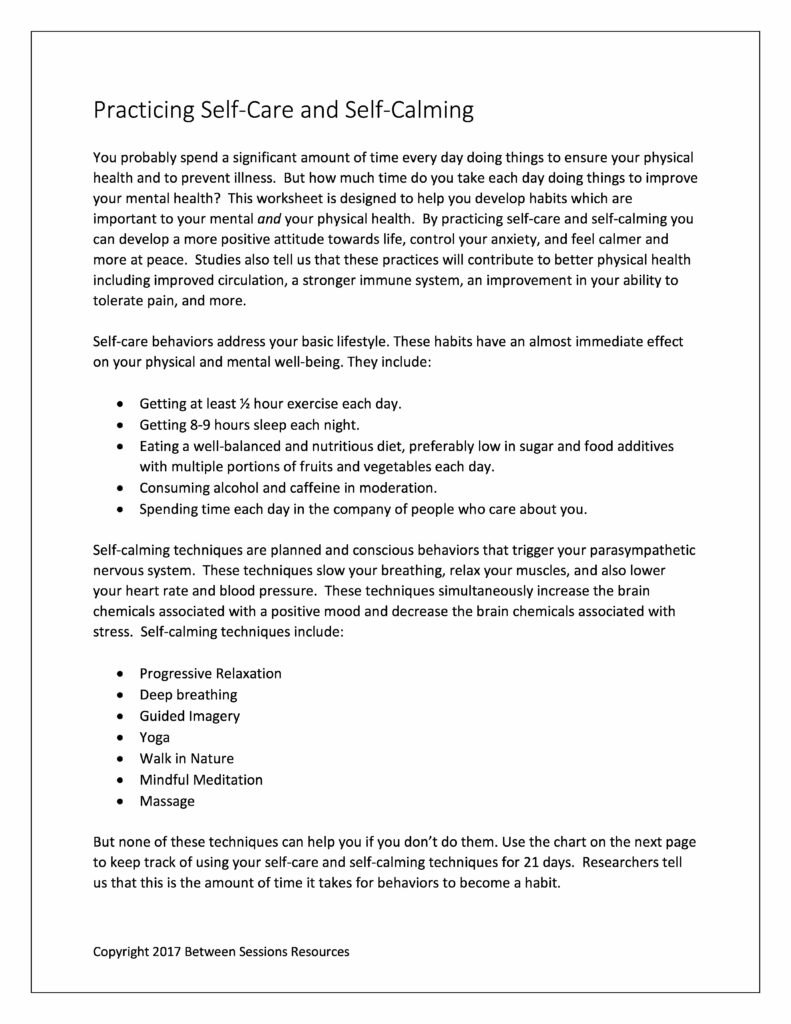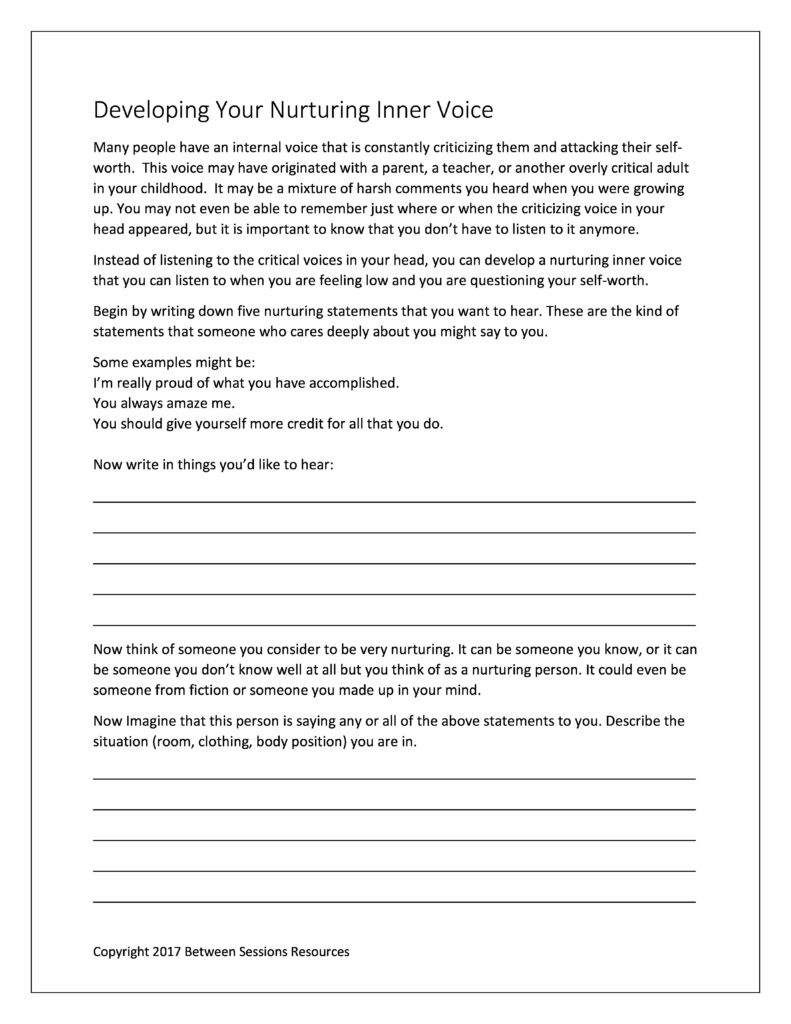This worksheet is designed to help people identify the “safety crutches” they use to avoid the things that make them anxious or contribute to other psychological problems. The worksheet details 13 common ways that people avoid facing their problems and asks user to identify their own safety crutches. A recording sheet asks people to pay attention to their safety crutches for one week and determine whether or not they really help their problems. (anxiety disorders, GAD, 0817)
This worksheet is intended to help people see the many benefits of developing an attitude of gratitude. It gives specific instructions on helpful activities to maximize the benefits of this practice. (depression, anxiety, prevention, gratitude, wellness, appreciation, 0717)
This worksheet is designed to help people identify the triggers that are associated with upsetting emotions like anxiety or depression. (0717)
This worksheet is intended to help people confront rather than avoid the thoughts that cause them to be anxious. It presents a variety of activities to practice thinking these thoughts and track of their progress. (anxiety, GAD, 0717)
This worksheet asks people to consider how they can motivate themselves to change in therapy. The worksheet presents 10 different ways to change and asks people to rate them and pick three ideas which would be most helpful. (therapy homework, motivation, 0617)
This workbook includes 30 assignments to be used by clients in conjunction with therapy, teaching skills in four areas: understanding panic attacks, learning self-calming techniques, tolerating anxiety and discomfort, replacing fears with rational thinking, and working toward permanent change.
This worksheet is designed to help people talk back to the thoughts that cause them to be anxious and fearful. (anxiety, panic attacks, CBT, 0317)
This worksheet is designed to encourage people to practice both self-care and self-calming techniques on a daily basis. The worksheet lists types of techniques are effective in each category and includes a form to record the use of these techniques for 21 days (the time it takes to form a habit). (PTSD, depression, anxiety, eating disorders, 0217)
This worksheet is designed to help people replace a critical inner voice with a more nurturing one. It asks the user to imagine a caring person in his or her life and internalize what this person is saying along with the feelings these statements engender. (PTSD, depression, CBT, 0117)
This questionnaire is designed to help therapists understand the nature and severity of a client’s panic attacks. It includes questions on symptoms, coping mechanism, other mental health concerns, medical conditions, and current medications. (0117, anxiety, panic disorder, assessment)










